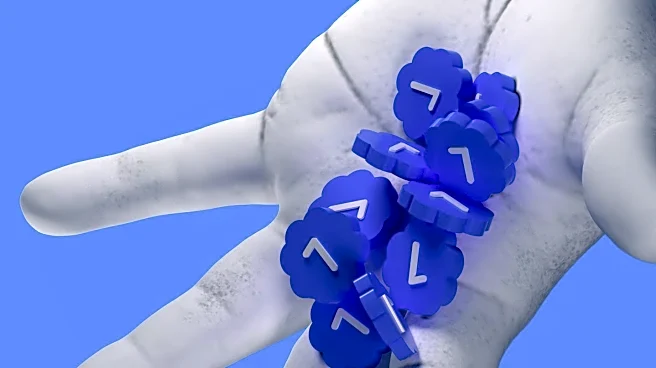What is the story about?
What's Happening?
A recent study has identified a safer method for placing the anteromedial portal during elbow arthroscopy, which could significantly reduce the risk of median nerve injury. The research suggests that placing the portal approximately 4.77 cm ventrally from the medial epicondyle at an angle of 57.38° in the trans epicondylar axis provides a safety margin of 1.5 cm, minimizing the risk of nerve damage. Elbow arthroscopy is a complex procedure with potential complications, including nerve injury. The study highlights the importance of individualized evaluation and additional safety measures, such as meticulous palpation of landmarks and real-time intraoperative assessment, to ensure safe portal placement.
Why It's Important?
The findings of this study are crucial for orthopedic surgeons performing elbow arthroscopy, as they provide a method to reduce the risk of iatrogenic nerve injury, which can have severe consequences for patients. By optimizing portal placement, surgeons can enhance patient safety and outcomes, potentially reducing postoperative complications and improving recovery times. This research underscores the need for personalized surgical approaches and the importance of considering anatomical variability among patients. The study's insights could lead to improved surgical protocols and training, ultimately benefiting the healthcare system by reducing the incidence of nerve injuries and associated costs.
What's Next?
Surgeons may begin to adopt the study's recommendations for portal placement in clinical practice, potentially leading to revisions in surgical guidelines and training programs. Further research could explore additional techniques to enhance safety during elbow arthroscopy, such as the use of advanced imaging technologies for real-time nerve mapping. The medical community may also focus on developing new tools or devices to assist in precise portal placement, minimizing the risk of nerve injury. As these practices become more widespread, patient outcomes could improve, and the incidence of nerve-related complications may decrease.
Beyond the Headlines
The study highlights the ethical responsibility of surgeons to prioritize patient safety by adopting evidence-based practices. It also raises awareness about the importance of continuous medical education and the integration of new research findings into clinical practice. The variability in anatomical structures among patients emphasizes the need for personalized medicine, which could lead to broader discussions about tailoring medical interventions to individual needs. This approach aligns with the growing trend towards precision medicine, which seeks to optimize healthcare delivery by considering genetic, environmental, and lifestyle factors.
AI Generated Content
Do you find this article useful?













